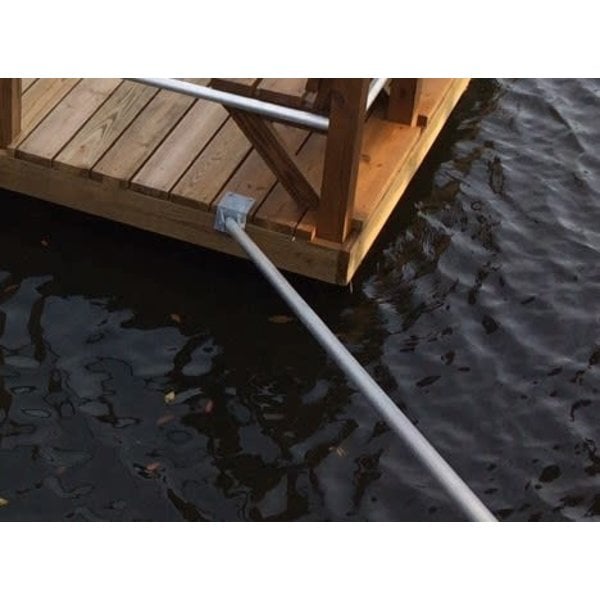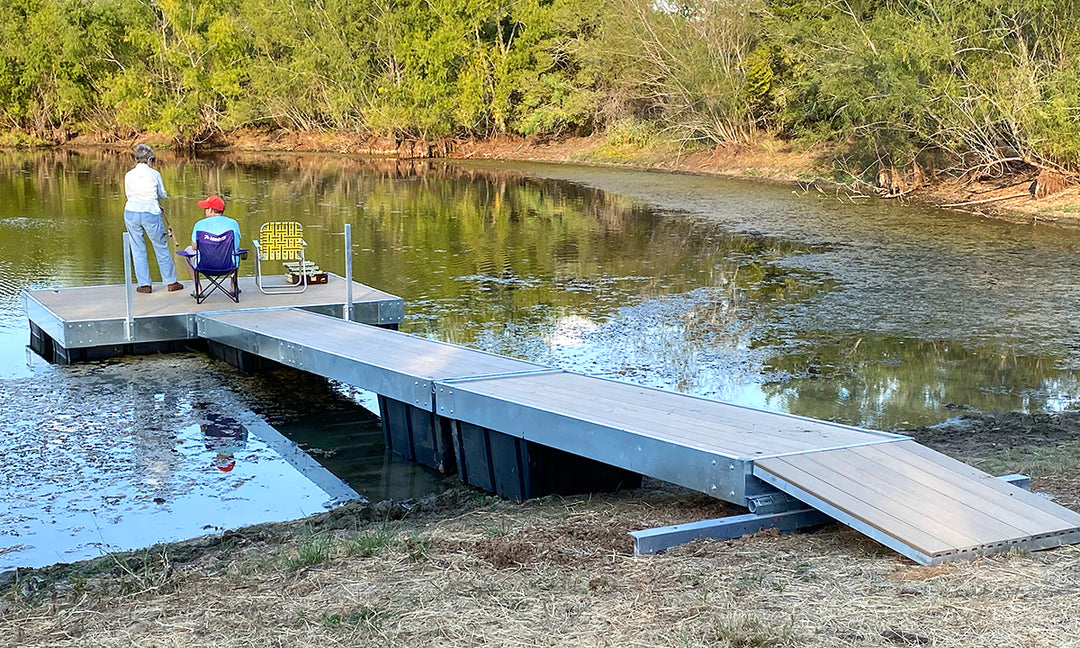Develop the Perfect Docking Option With Floating Docks
Floating docks existing a functional solution for a selection of maritime requirements, adjusting effortlessly to rising and fall water degrees and varied vessel kinds. Their modular nature permits rapid installment and moving, yet the selection of suitable products and layout functions is important for making certain both functionality and aesthetic appeal. As we explore the vital aspects that add to the performance of floating docks, a number of key factors regarding stability and upkeep will certainly emerge, questioning concerning exactly how to maximize your docking experience. The succeeding conversation will illuminate these vital factors to consider.

Benefits of Floating Docks
Floating docks deal numerous benefits that make them an excellent option for different maritime applications. One of the main advantages is their adaptability to changing water degrees. Unlike repaired docks, floating docks rise and loss with the tide, guaranteeing consistent ease of access for vessels. This feature is specifically vital in areas prone to significant tidal fluctuations or seasonal water degree changes.
Furthermore, floating docks are generally easier and quicker to set up contrasted to conventional fixed frameworks. Their modular style enables for straightforward assembly and disassembly, promoting maintenance and moving when essential. This adaptability is especially valuable for short-lived applications or in atmospheres where conditions may alter.
Floating docks additionally tend to be much more eco-friendly, as they lessen disturbance to the seabed and bordering marine ecosystems. Their resilient nature decreases the threat of damage to marine life, promoting a healthier environment. These docks can be tailored to suit different vessel sizes, guaranteeing that they fulfill specific operational requirements.
Eventually, the mix of adaptability, simplicity of setup, and ecological factors to consider makes floating docks a very effective solution for a broad variety of maritime requirements.
Choosing the Right Products
Selecting the ideal products for floating docks is crucial to make sure stability, long life, and sturdiness. The choice of products directly affects the dock's efficiency in various ecological problems, consisting of exposure to water, sunshine, and prospective wear from marine web traffic.
Usual products made use of for floating docks include aluminum, timber, and high-density polyethylene (HDPE) Aluminum is light-weight, corrosion-resistant, and needs marginal maintenance, making it an outstanding choice for longevity. Its first price can be greater contrasted to various other products.
Wood, while visually attractive and offering a standard look, can be at risk to rot and pest damage if not effectively dealt with. Consequently, making use of pressure-treated wood or naturally long lasting species like cedar or redwood can reduce these issues.
HDPE is a popular selection because of its resistance to UV rays and chemicals, along with being environmentally friendly. floating dock services. It is readily available and lightweight in various colors, enabling personalization
Eventually, the best product option will depend upon particular needs, including budget, preferred aesthetics, and environmental considerations. Cautious assessment of these elements will cause a effective and resistant floating dock service.
Design Considerations for Security
When designing floating docks, ensuring security is a fundamental element that can dramatically affect their functionality and security. Security in floating dock layout is affected by different variables, consisting of buoyancy, Going Here weight distribution, and the setup of parts.
Weight circulation is important; uniformly dispersing loads across the dock prevents tilting and improves security. This can be achieved via critical positioning of docking equipment, such as cleats and fenders, along with proper spacing of floats. Furthermore, the measurements of the dock should be attentively prepared. Larger designs can provide enhanced stability, specifically in rough water problems, while longer docks may call for added supports to avoid drooping.
An additional essential factor to consider is the environmental effect, including wave activity and wind. Incorporating functions such as sidewalls or skirting can aid alleviate the impacts of ecological forces, preserving stability in adverse conditions. Inevitably, a mix of thoughtful style, material selection, and understanding of ecological elements will certainly generate a floating dock that satisfies both stability and safety and security needs.
Installation Tips and Strategies

Next, secure the necessary licenses and abide by neighborhood guidelines, which may dictate installation techniques and environmental factors to consider. Involve a qualified specialist experienced in floating dock installments if required. Usage premium materials created for aquatic environments to enhance durability and long life.
When placing the dock, straighten it alongside the coastline to promote very easy access. Make certain that the anchoring system is durable, utilizing cinder block or helical anchors to maintain the dock against wind and wave activity. It's critical to represent seasonal water degree fluctuations, including potential ice activity in colder environments.
Throughout the installation, double-check the dock's floatation and security prior to completing the anchoring. Frequently check the setup for any type of indicators of wear or damages. By following these pointers and techniques, you can achieve a protected, useful, and visually pleasing floating dock installation that satisfies your demands.
Maintenance and Treatment Standards
Caring and maintaining for floating docks is important to lengthening their life-span and ensuring secure use. Normal examinations need to be carried out to identify any type of indicators of wear, damages, or aquatic growth. Search for fractures, loosened installations, or tarnished areas on the dock's surface area, as these concerns can endanger architectural integrity.
Cleansing is crucial. Utilize a stress washer to eliminate algae, barnacles, and debris, which can build up over time. For persistent you can try this out growth, take into consideration environmentally pleasant cleaner that won't hurt water life.
Additionally, check the mooring lines and supports frequently to ensure they are protected and totally free from rust. Change any type of torn or damaged lines immediately to keep stability.
During severe weather, such as storms or freezing conditions, take precautionary procedures. Safeguard the dock with extra mooring lines and, if viable, eliminate any type of removable parts to prevent damages.
Conclusion
In verdict, the execution of floating docks presents a effective floating dock company and flexible docking service ideal for different maritime applications. With correct installation and regular maintenance, floating docks can provide reputable and reliable docking experiences for a vast array of vessels.
As we explore the necessary aspects that contribute to the efficiency of floating docks, a number of key elements pertaining to stability and maintenance will arise, increasing concerns regarding just how to enhance your docking experience. Unlike fixed docks, floating docks surge and fall with the tide, making sure consistent ease of access for vessels.When developing floating docks, ensuring security is a fundamental facet that can significantly impact their capability and safety and security. Stability in floating dock design is influenced by different variables, consisting of buoyancy, weight circulation, and the setup of parts. Eventually, a mix of thoughtful style, product choice, and understanding of ecological elements will certainly yield a drifting dock that meets both security and safety needs.